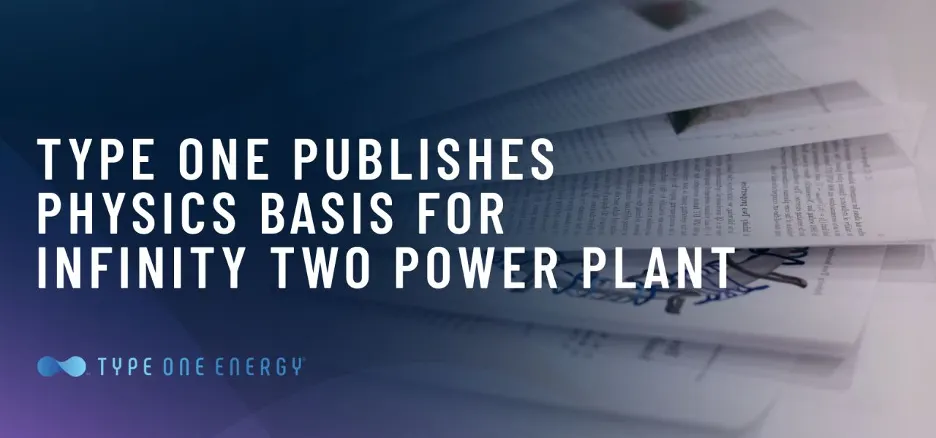Type One Energy Publishes Design Basis for Stellarator Fusion Pilot Plant
By Karl Tischler

Image courtesy of Type One Energy.
On March 27, 2025, US-based startup Type One Energy released the design basis and supporting scientific papers for its Infinity Two stellarator-based fusion pilot plant. The release includes both a public-facing design document and a full physics basis published in a special issue of the Journal of Plasma Physics.
So what have they done, and why is it significant?
What have they done? – A full design basis for a commercial stellarator power plant
Type One Energy has issued what it calls the first realistic unified fusion pilot plant design basis, providing a detailed, public roadmap for its Infinity Two device. This design outlines the mission, engineering requirements, safety considerations, and scientific underpinnings of the plant.
Accompanying this is a comprehensive collection of peer-reviewed papers detailing the physics behind the concept—offering transparency and inviting scrutiny.
It should be noted that this is a physics basis not an engineering design, so it is not yet a power plant concept.
Infinity Two is a stellarator, a magnetic confinement device known for its inherent stability and continuous operation potential, now gaining traction thanks to advances in supercomputing and high-temperature superconducting (HTS) magnets.
Why is it impressive? – Transparency and ambition in one package
This is the first time a private fusion company has made public a full power plant design basis and accompanying physics rationale in a peer-reviewed journal. Type One Energy is aiming not just to build a pilot plant—but to create a replicable model for commercial fusion deployment. That’s a bold step.
Also noteworthy: the company plans to build Infinity One, a prototype stellarator, at the Tennessee Valley Authority’s Bull Run site, using existing grid connections and regulatory pathways to accelerate deployment. This prototype will inform the eventual construction of the Infinity Two power plant.
Why is it important? – This marks a shift from secrecy to shared progress
Fusion is a field known for big promises and few specifics. By openly sharing its design basis and supporting science, Type One is inviting engagement—not just from regulators and researchers, but from industry, supply chain partners, and investors. It suggests a shift in how fusion companies might operate: open-by-default, not closed and confidential.
The announcement also adds momentum to the stellarator approach—once considered too complex to build but now increasingly viable due to breakthroughs in manufacturing, magnet design, and simulation. With multiple companies (like Proxima Fusion in Germany) now pursuing stellarators, a new race is underway—not just to prove the concept, but to scale it.
What’s next? – Regulatory approvals and construction prep
Type One aims to complete licensing for Infinity Two in 2025, with construction of its Infinity One prototype potentially beginning in 2026. Their plan also aligns with the US Department of Energy’s milestone-based funding structure, which incentivises progress toward pilot plant demonstration before 2035.
The coming months will test whether openness can also attract investment and public support—and whether a stellarator can truly be built on a commercial timeline.
To fully understand the feasibility and impact of this concept, read our in-depth analysis. The full article takes a deep-dive inside the Infinity Two pilot plant design and assesses what this means in the broader context of fusion development.
The article includes:
- An analysis of the technical features and innovations of the Infinity Two stellarator design.
- Insights into how Type One Energy intends to transition from prototype to pilot plant.
- An assessment of the significance of Type One Energy’s Infinity Two design basis to the fusion landscape.
- How Infinity Two compares to Proxima Fusion’s Stellaris design.
- Executive summary with key takeaways.
Don’t miss the full breakdown—read the full article now: Type One Energy Unveils Design Basis for Infinity Two Stellarator Pilot Plant.
